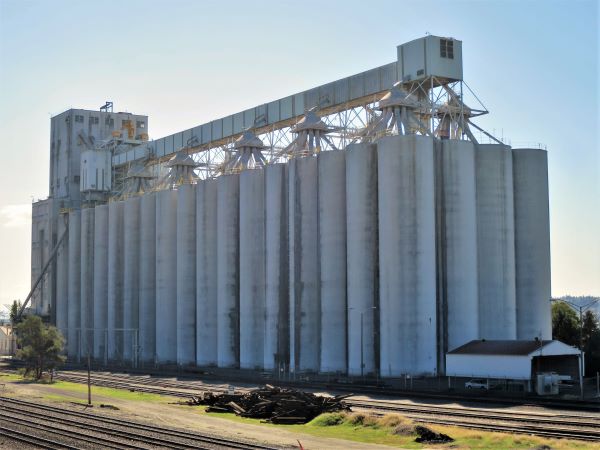Africa’s livestock agriculture industry is essential to the global economy and future food security. It accounts for one-third of the world’s livestock population and 40% of the global gross domestic product.
The increasing population will look to Africa’s livestock agricultural sector for a viable protein source to feed hungry nations. However, the animals must also eat, ensuring that the industry is sustainable and capable of nourishing its people.
Africa’s livestock agriculture has hit a crossroads — livestock feed is often in high demand and poor quality. As a result, animals are at risk of malnutrition and eating poor-quality food. Fortunately, African farmers can properly store food to avoid pests, toxins and other hazards.
Livestock Feed Problems Common in Africa
Africa’s feed production faces unprecedented conditions year-round. Although much of its farms are lush and green during rainy seasons, prolonged dryness and heat waves make it difficult to produce enough.
Cattle feed fluctuations in quality and quantity impose a 40% decline in milk production in Tanzania. In Ethiopia, higher demand for livestock feed raises concerns about future poverty and food scarcity. Animal food in Ethiopia has a 15-fold lower nutritional count than conventional feed sources.
Additionally, desperation for feed has led farmers to give unsafe food materials to livestock. The Food and Agriculture Organization (FAO) says that 86% of the world’s farm animals are unfit for human consumption. The question of adequately preserving feed to avoid contaminants, pests and weather-related production complications has become a priority.
Preserving Animal Feed Safely
Safeguarding animal feed is crucial to protecting livestock from fungal infections and securing the future food supply. Under the right conditions, most compounded dry feeds have a six-month shelf life, which could be prolonged by freezing or refrigerating.
Other suggestions for properly storing livestock feed include the following:
- Use plastic feed bags that lock out moisture and are heat- and chemical-resistant
- Utilize airtight bins or upcycle large freezers
- Place mesh coverings over feed bins to prevent pests from getting inside
- Ensure storage is climate-controlled at 70 F to avoid moisture and molding
- Keep feed bags off the floor and away from walls
Regardless of where livestock feed is stored — such as a large barn, silo or closeted storage area — farmers should continuously monitor the space for pests and rodents, water and microbial contamination.
Food Waste a Solution for Feed Demand
Farmers and governments seek ways to create eco-focused farming practices that prioritize the environment, reduce emissions and protect food supplies. Sustainable methods have leaned into rainwater harvesting systems and methane-reducing supplements for cattle. Cows produce ample methane emissions during digestion that contribute to global warming.
Sustainable farming also aims to address food waste. This is a significant problem worldwide, leading to hunger in impoverished communities and environmental damage. However, 82% of livestock feed derives from food waste, most of which comes from restaurants, hotels and cafeterias.
The World Wildlife Fund (WWF) points out that another 14.7 million tons of food waste can be diverted from landfills to the livestock industry for feed in the United States. Indeed, this practice lags in other nations with ample room for improvement.
WWF and Penn State University studied how to process food waste into feed for egg-laying hens, using it as ingredients and including bakery meal from manufacturers. Their findings showed that food-waste-turned-feed improved agricultural land use in preventing future cropland conversions, while bakery meal was conducive to the hens’ diet overall.
Farmers must consider whether food waste is adequate for their livestock’s health and if it meets the necessary nutrition density. However, ramping up food waste as a feed source could help meet increasing demand, reduce environmental pollution and decrease emissions from transporting garbage to landfills.
Storing Livestock Feed Properly Provides a Long-Lasting Food Source
Farmers in Africa can prevent excess demand and improve animal food quality by storing feed correctly. Sealing it tightly in feed bags and containers can keep pests at bay and ensure longer-lasting freshness and nutritional value. Livestock fed clean, nutrient-dense meals become even safer and more nutritious for human consumption.








